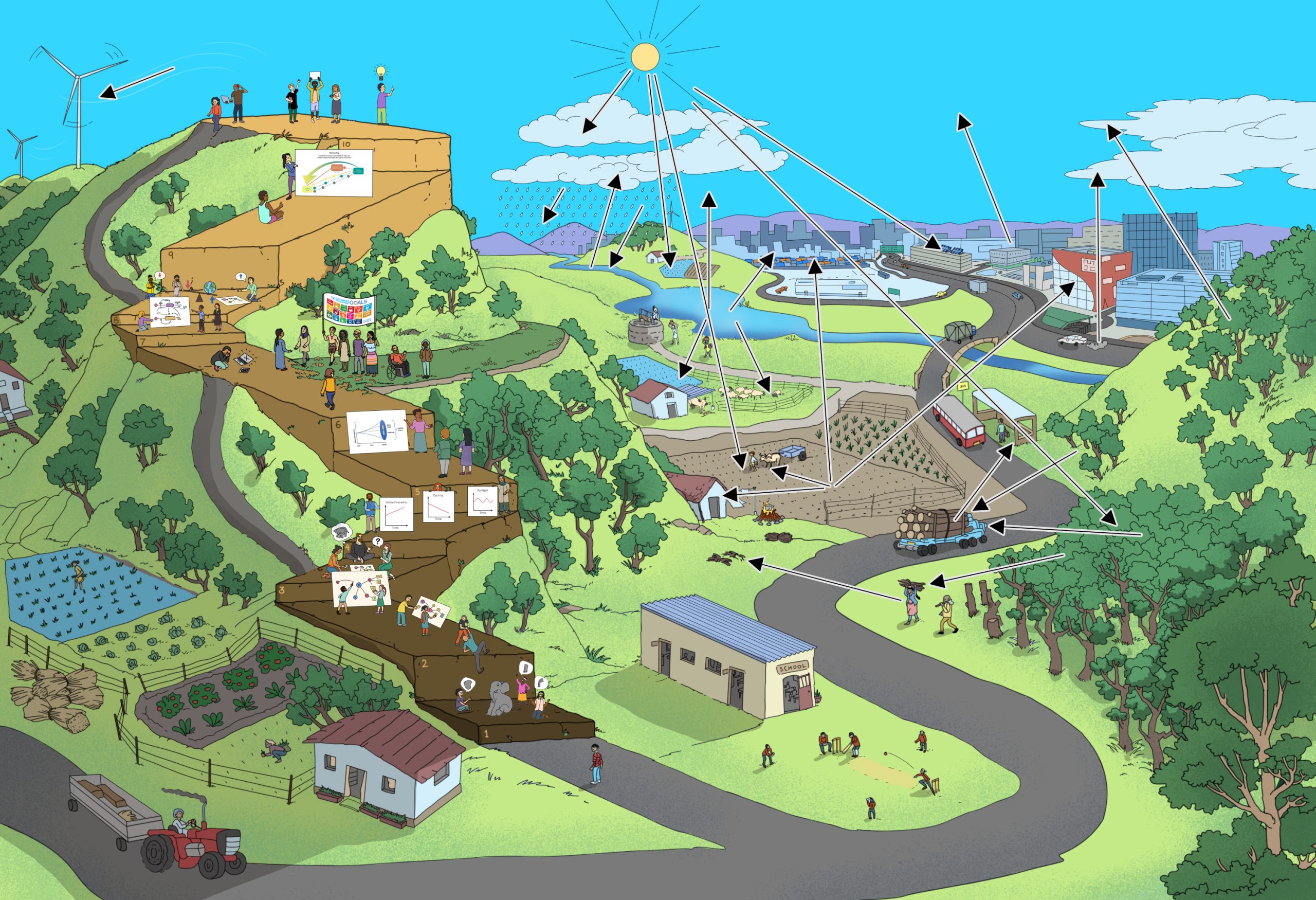Systems thinking is the ability to describe and/ or visualise a part of a complex reality, express that part of reality as a model, understand the model as a system, use the model to explain the behaviour of the system, anticipate the behaviour of the system, and evaluate its impacts on sustainable development, identify potential points of, and types of interventions, generate options to act, assess their impacts in the frame of sustainable development, and decide whether further actions are necessary or not.
1. What does this mean?
To understand reality in a deeper way, it is necessary to focus on a part of it, while recognizing that this is part of a larger whole. This can start by choosing topics the learners feel interested in or concerned about, which may range from the jeans one wears, or chips young people love to snack on, or social or living conditions in one’s city, or any other topics.
The first step to the individual’s systemic thinking competency is to recognize the multi-faceted nature of topics of interest, and be able to express it in words (as a description) or as a sketch (as a visualisation). A description may be an oral or written account, while a visualisation may be a sketch, diagram (map, landscape), event, or situation.
2. What is the aim?
To enable learners to
- Produce a structured description of the chosen topic, including
- Constituent elements, such as natural and human-made, tangible and intangible,
- Numbers or quantities, if relevant, and
- Perceptions and feelings about the object, situation or chosen topic
- Self-reflect on their prior knowledge, recognize that knowledge can be gained from many sources, and develop the ability to seek out information.
4. Activities, tasks and suggested learning methods
The description of reality that must be prepared in this step should consist of physical elements and context of the chosen topic. This description may be done in as much detail as possible, including:
- Constituent elements, such as natural and human-made, tangible and intangible,
- Numbers or quantities, trends (increasing or decreasing), if relevant
- Perceptions and feelings about the object, situation or chosen topic
- What do you consider as part of the topic
- What do you consider as things that affect your topic
This task might be supported by one or more learning methods including:
- Structured description
- Back to Back sitting
- Cinquain
- Drawing
- Telephone call
- Think Pair Share
- Taboo Game.
Think Pair Share is more than a learning method and may be used in many activities as a learning principle.
5. Conclusion
- Reflect on what is learnt thus far, either by summarizing the activity or asking learners to do so.
- Reflect on the process of synthesizing, share your knowledge or information, and gather additional information from others.
- Ask the group to think and share further leading questions about the object or situation.
- The answers may be discussed in the next steps.
Illustration of staircase model for further leading questions
6. Suggested Further Leading Questions
- How did the object or situation come into being? Who (or what conditions) produced it, when, why, where and how?
- What is happening now?
- What may happen in future?


